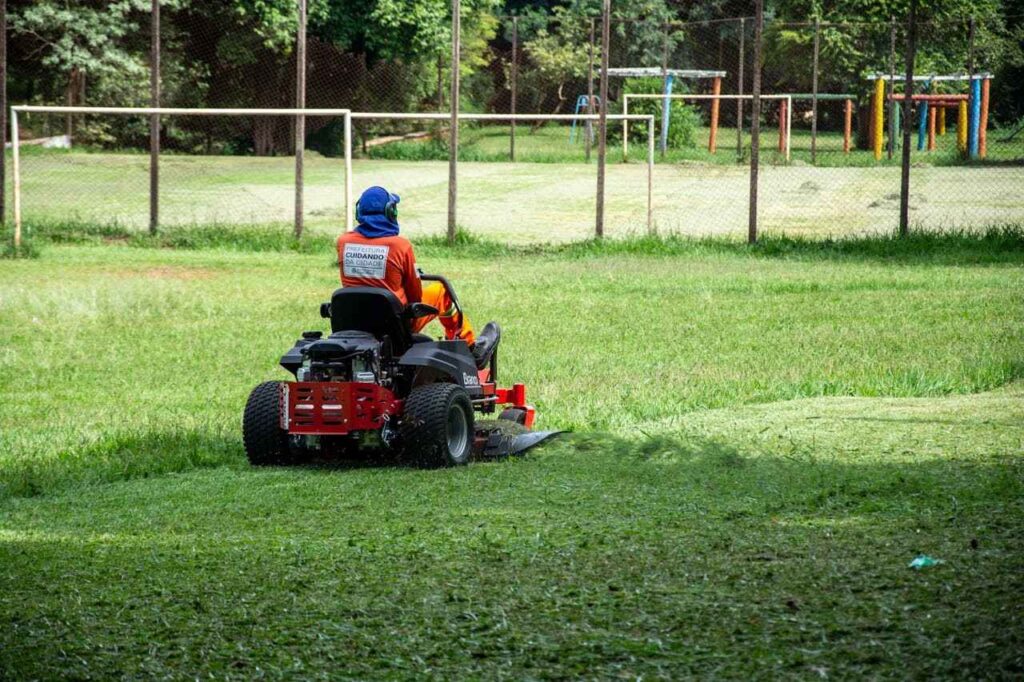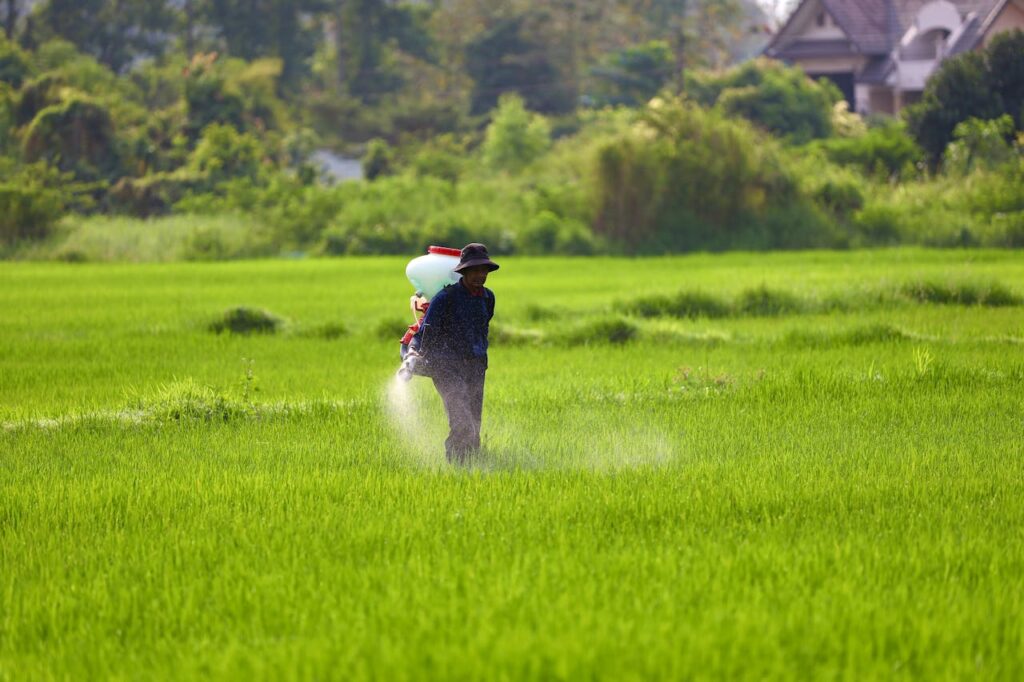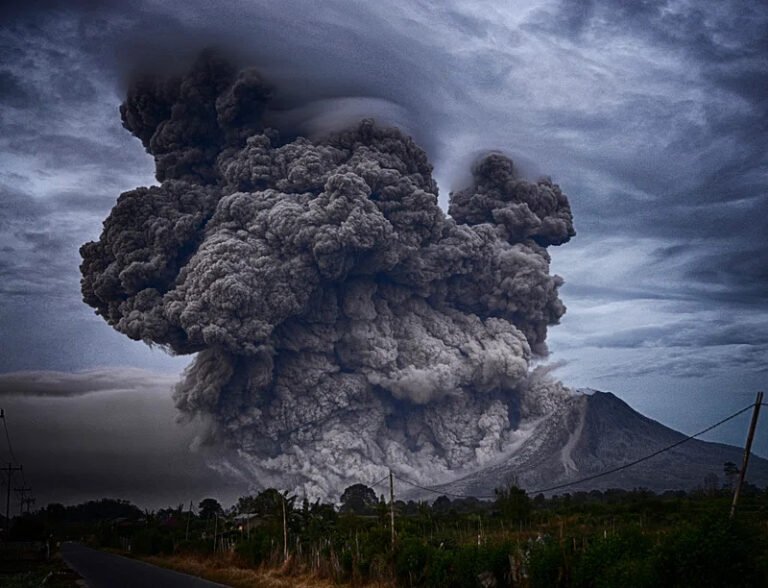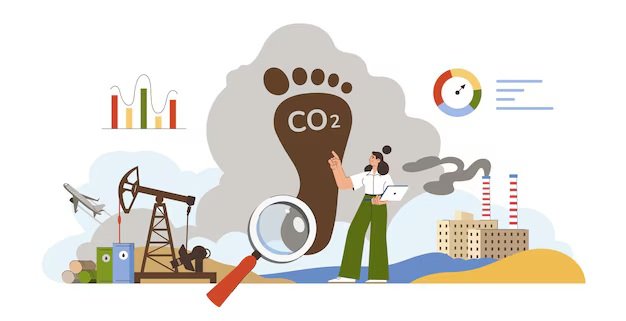Why Are Grass Lawns Bad for the Environment?
When you think of a lawn, you might picture a neat, green patch of grass—something that feels almost natural in many neighbourhoods. But have you ever stopped to wonder why we have them in the first place?
Lawns didn’t start as a common feature in homes. Back in 17th-century Europe, having a lawn was a sign of wealth. Only the rich could afford to keep land unplanted, so these grassy areas became symbols of status. Fast forward to post-World War II America: suburban living took off, and lawns became a standard part of the ideal home. With affordable lawnmowers and the rise of suburban neighbourhoods, the grass lawn became a cultural norm.
Today, lawns are everywhere. In the U.S. alone, turfgrass covers about 163,800 square kilometres—that’s more than three times the area used for irrigated corn, the country’s largest irrigated crop. Maintaining these lawns isn’t just about mowing; it involves a lot of water, fertilisers, and pesticides. In fact, keeping lawns green consumes more water than the seven most water-intensive crops combined.
But here’s the thing: while lawns might look nice, they come with environmental costs. They require significant resources to maintain and can contribute to pollution and water waste. It’s worth considering whether our love for lawns is more about tradition than practicality.
In this guide, we’ll explore why traditional grass lawns can be harmful to the environment and discuss alternative landscaping options that are both beautiful and sustainable.

In This Article
- 1. Water Waste: Lawns Are Thirsty
- 2. Chemical Use: Fertilisers and Pesticides
- 3. Biodiversity Loss: Lawns Are Monocultures
- 4. Carbon Footprint: Lawns Emit More Than They Store
- 5. Invasive Species and Ecological Imbalance
- 6. Noise and Air Pollution
- 7. Social Pressure and Inequity
- Conclusion:
1. Water Waste: Lawns Are Thirsty
Lawns are incredibly water-intensive. According to the U.S. Environmental Protection Agency (EPA), nearly one-third of all residential water use nationwide goes to outdoor irrigation, with the majority of that dedicated to lawns. That’s about 9 billion gallons of water every single day—just to keep grass green.
In drier regions like California, the numbers are even more staggering. During the 2012–2016 drought, the state faced severe water shortages. To cope, many cities imposed restrictions on lawn watering, and residents began rethinking their landscaping. A study by the Pacific Institute found that landscaping accounted for up to 50% of urban water use in California during that period.
These challenges prompted a shift toward more sustainable landscaping practices. Xeriscaping, which involves using drought-tolerant plants and reducing lawn areas, gained popularity. For instance, a study in Southern Nevada revealed that homes converting from traditional lawns to xeriscaping reduced their annual water use by about 30%, saving approximately 96,000 gallons per household.
Key takeaway: Traditional lawns demand a significant amount of water, often in areas where water is scarce. By exploring alternative landscaping options, homeowners can conserve water, reduce their utility bills, and contribute to environmental sustainability.

2. Chemical Use: Fertilisers and Pesticides
Maintaining a green lawn often involves the use of synthetic fertilisers and pesticides, which can have unintended environmental consequences. These chemicals don’t stay confined to our yards; they can run off into storm drains, eventually reaching rivers, lakes, and oceans. This runoff contributes to issues like algal blooms, dead zones, and contamination of drinking water sources.
Dr. Diane Lewis, a physician and founder of The Great Healthy Yard Project, emphasises the risks associated with lawn chemicals. She notes that these substances can pollute our drinking water, posing health risks to families and wildlife alike. Dr. Lewis advocates for reducing or eliminating the use of synthetic chemicals in yard care to protect water quality and public health.
In terms of chemical usage, grass lawns often receive more fertilisers and pesticides per acre than some agricultural lands. For example, lawns may be treated with 100–150 pounds of fertiliser and 5–7 pounds of pesticides per acre annually, whereas corn farmland typically uses about 125 pounds of fertiliser and 2–3 pounds of pesticides per acre. This higher concentration of chemicals on lawns underscores the potential for environmental impact.
The overuse of these chemicals not only affects water quality but also harms beneficial soil organisms. Studies have shown that excessive pesticide application can disrupt soil microbial communities, reducing soil fertility and affecting plant health. This degradation of soil quality can have long-term effects on the ecosystem, making it more challenging to maintain healthy plant life.
Given these concerns, homeowners might consider alternative landscaping practices, such as using native plants or organic lawn care methods. These approaches can reduce the reliance on synthetic chemicals, thereby minimizing environmental harm and promoting a healthier ecosystem.

3. Biodiversity Loss: Lawns Are Monocultures
Most grass lawns are monocultures—just one type of plant, usually non-native turfgrass. This uniformity offers little food or shelter for pollinators like bees, butterflies, and birds. In contrast, native plants provide nectar, pollen, and nesting spots, supporting a diverse range of wildlife.
A compelling real-life example of this transformation comes from King’s College at the University of Cambridge. In 2019, the college replaced a portion of its centuries-old manicured lawn with a wildflower meadow. This change led to a significant increase in biodiversity, including more plants, bats, spiders, and other invertebrates. Additionally, the meadow required less maintenance and produced 99% fewer greenhouse gas emissions compared to the traditional lawn.
Research supports these observations. A 2023 study published in Insect Conservation and Diversity found that urban green spaces enhanced with wildflower meadows and pollinator-friendly ornamental plantings hosted significantly higher pollinator diversity and abundance compared to traditional grass lawns. These enhanced areas not only attracted more pollinators but also supported more complex plant-pollinator interactions, indicating a healthier ecosystem.
Key takeaway: By diversifying our yards with native plants, we can transform sterile lawns into vibrant habitats. This not only benefits pollinators but also enriches our own experience of nature right at home.
4. Carbon Footprint: Lawns Emit More Than They Store
Contrary to popular belief, lawns are not effective carbon sinks. In fact, the upkeep involved—from mowing to fertilising—often results in more carbon emissions than the grass can absorb.
Gas-powered lawn mowers are a major contributor to this issue. Operating a typical gas mower for just one hour can emit as much pollution as driving a car for 100 miles. These small engines are surprisingly inefficient and contribute significantly to air pollution.
The production of synthetic fertilisers used in lawns contributes to a higher carbon footprint, as it relies heavily on fossil fuels. Additionally, their application releases nitrous oxide, a greenhouse gas approximately 265 times more potent than carbon dioxide. This gas not only accelerates global warming but also contributes to ozone layer depletion.
Dr. David Tilman, an ecologist at the University of Minnesota, has highlighted that the emissions associated with maintaining a pristine lawn often outweigh any carbon sequestration benefits the grass might provide. This shows the need to reconsider our lawn care practices.
Learn More: Why Are Landfill Sites Bad for the Environment?
5. Invasive Species and Ecological Imbalance
Kentucky bluegrass, despite its name, isn’t native to North America. Originally from Europe and Asia, it was introduced to the U.S. and quickly became a favourite for lawns due to its lush appearance. However, its widespread use has led to significant ecological concerns.
In Colorado, the dominance of Kentucky bluegrass has disrupted local ecosystems. This grass forms dense mats that outcompete native plants, reducing biodiversity. A study found that it was linked to reduced butterfly diversity and a decline in flowering plant abundance across the Great Plains region. Such changes can have cascading effects on local wildlife that depend on native flora.
Recognising these issues, Colorado has taken legislative steps to address the problem. In 2024, the state passed a law banning the installation of nonfunctional turf, including Kentucky bluegrass, on most commercial, industrial, and state government properties. This move aims to conserve water and restore ecological balance. Additionally, cities like Fort Collins have implemented restrictions on high-water turf grasses for new developments.
Efforts are also underway to replace existing Kentucky bluegrass areas with native vegetation. For instance, in 2023, Denver’s Parks and Recreation department began converting 10 acres of bluegrass medians into native prairie landscapes. These initiatives not only reduce water consumption but also promote the return of native species, helping to restore ecological balance.
6. Noise and Air Pollution
Gas-powered mowers, leaf blowers, and trimmers contribute significantly to both noise and air pollution. These machines not only disrupt the peace of our neighbourhoods but also release harmful emissions into the atmosphere.
According to the US EPA, gas-powered lawn and garden equipment in the U.S. consumes approximately 800 million gallons of gasoline annually. This substantial fuel usage results in the emission of pollutants such as volatile organic compounds (VOCs), carbon monoxide (CO), and nitrogen oxides (NOx), all of which can adversely affect air quality and human health.
Furthermore, the EPA has reported that small engines, like those found in lawnmowers, contribute significantly to air pollution. These engines are responsible for a notable portion of the nation’s VOC emissions, which play a role in the formation of ground-level ozone and smog.
The noise generated by these machines is another concern. Gas-powered lawn equipment can produce sound levels exceeding 85 decibels, which is comparable to the noise of city traffic. Prolonged exposure to such noise levels can lead to hearing loss and increased stress levels among both operators and nearby residents.
Given these environmental and health impacts, it’s worth considering alternatives. Electric or battery-powered lawn equipment tends to be quieter and produces fewer emissions. Better yet, transitioning to landscaping that requires minimal maintenance.

7. Social Pressure and Inequity
In many neighbourhoods, the pressure to maintain a traditional green lawn isn’t just about personal preference—it’s often enforced by homeowners associations (HOAs). These organisations set landscaping rules that can penalise homeowners for choosing eco-friendly alternatives, like native plants or drought-resistant gardens.
However, there’s a growing movement to challenge these norms. Some states have enacted laws limiting HOAs’ power to mandate traditional lawns, recognising the importance of water conservation and biodiversity. These changes empower homeowners to make environmentally conscious choices without fear of penalties.
Cities like Las Vegas are also taking proactive steps. Through the Water Smart Landscapes Rebate program, residents can receive up to $3 per square foot for replacing grass with desert-friendly landscaping. This initiative not only conserves water but also encourages sustainable yard transformations.
Despite these positive developments, challenges remain. HOAs often prioritise uniformity and property values, sometimes at the expense of environmental considerations. Changing these deeply ingrained standards requires community engagement and a shift in the collective mindset.
By advocating for more flexible landscaping rules and embracing sustainable practices, communities can balance aesthetic preferences with ecological responsibility. It’s a collective effort that benefits both homeowners and the planet.
Learn More: Why Are Invasive Species Dangerous to the Environment?
Sustainable Alternatives: What You Can Do
- Native Plant Landscaping: Using plants native to your region can reduce water use by up to 75% and attract beneficial insects.
- Edible Yards: Convert part of your lawn into a vegetable or herb garden. It reduces food miles and enhances food security.
- Rain Gardens and Xeriscaping: Rain gardens help manage stormwater runoff. Xeriscaping uses drought-tolerant plants to minimise water use without sacrificing beauty.
Action Table: Easy Lawn Alternatives
| Alternative | Benefits | Maintenance Level |
| Native Plants | Supports biodiversity, low water use | Low |
| Edible Gardens | Provides food, reduces food miles | Medium |
| Xeriscaping | Drought-tolerant, low-maintenance | Low |
| Clover Lawns | Nitrogen-fixing, soft underfoot | Low |
Conclusion:
It’s time to rethink what beauty means in our outdoor spaces. The traditional lawn may seem benign, even wholesome, but its environmental toll is significant. From water waste and chemical runoff to lost biodiversity and carbon emissions, grass lawns are a legacy we need to outgrow.
But the good news? Change is already happening. Individuals, communities, and even municipalities are embracing alternatives that are not just sustainable but vibrant and life-giving. Your lawn can be part of the solution.
Start with a patch. Plant a few natives. Ditch the chemicals. Every blade of grass replaced with something better is a step toward a healthier planet.







